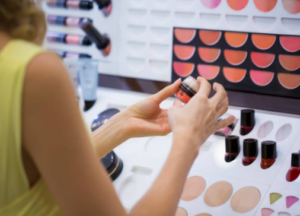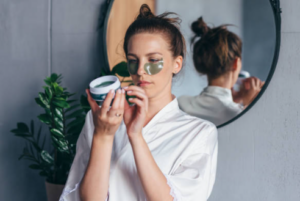Empower Your Beauty Routine

In a world inundated with beauty products promising transformative results, deciphering the fine print on labels has become essential for consumers seeking transparency and efficacy. From skincare serums to makeup essentials, understanding beauty labels empowers you to make informed decisions about the products you choose to incorporate into your routine. In this comprehensive guide, we’ll break down the intricacies of beauty labels, providing you with the knowledge and tools to navigate the vast landscape of beauty products with confidence.
1. Know Your Ingredients
The first step in decoding beauty labels is familiarizing yourself with common ingredients found in skincare, haircare, and makeup products. Ingredients are typically listed in descending order of concentration, with the highest concentration ingredients appearing at the beginning of the list. Look for key ingredients that address your specific skincare concerns, such as hyaluronic acid for hydration, vitamin C for brightening, or retinol for anti-aging benefits. Understanding the purpose and function of these ingredients will help you choose products tailored to your needs.
2. Beware of Greenwashing
Greenwashing refers to the deceptive marketing practice of presenting a product as environmentally friendly or natural when it may not be. To avoid falling prey to greenwashing tactics, scrutinize beauty labels for certifications and seals of approval from reputable organizations such as the USDA Organic seal, EWG Verified mark, or Leaping Bunny certification for cruelty-free products. These certifications provide assurance that the product meets specific standards for ingredient sourcing, sustainability, and animal welfare.
3. Identify Potential Irritants
For individuals with sensitive skin or allergies, identifying potential irritants is crucial for preventing adverse reactions. Scan beauty labels for common allergens and irritants such as fragrance, alcohol, sulfates, and parabens, which may trigger skin irritation, redness, or inflammation. Opting for fragrance-free or hypoallergenic products can help minimize the risk of sensitivity reactions, ensuring a more comfortable and enjoyable skincare experience.
4. Understand Product Claims
Beauty labels often feature an array of product claims designed to entice consumers and convey the product’s benefits. However, not all claims are created equal, and some may be misleading or exaggerated. Look for evidence-backed claims supported by scientific research, such as “dermatologist-tested,” “clinically proven,” or “non-comedogenic.” Be cautious of vague or ambiguous claims, such as “natural” or “organic,” which may lack standardized definitions and regulatory oversight.
5. Consider Packaging and Sustainability
Beyond the ingredients list, consider the packaging and sustainability practices of the brand. Look for products packaged in recyclable or biodegradable materials, as well as brands that prioritize sustainable sourcing and manufacturing practices. Sustainable packaging not only reduces environmental impact but also reflects a brand’s commitment to ethical and eco-conscious principles. Additionally, consider supporting brands that offer refillable or zero-waste packaging options, further reducing waste and promoting circular economy practices.
6. Research Brand Ethics
In addition to product formulations and packaging, consider the ethics and values of the brand behind the product. Research the brand’s stance on animal testing, sustainability, diversity, and social responsibility to ensure alignment with your personal values. Choose brands that prioritize transparency, inclusivity, and ethical practices throughout their supply chain, from ingredient sourcing to production and distribution. By supporting ethical and socially responsible brands, you contribute to positive change within the beauty industry and beyond.

7. Seek Professional Advice
When in doubt, seek guidance from skincare professionals, dermatologists, or beauty experts who can offer personalized recommendations based on your skin type, concerns, and goals. A skincare consultation or professional assessment can help you navigate the complexities of beauty labels and identify products best suited to your individual needs. Additionally, online resources and beauty communities can provide valuable insights and reviews from fellow consumers, helping you make informed decisions about your beauty purchases.
Decoding beauty labels is an essential skill for savvy consumers navigating the vast and ever-evolving landscape of beauty products. By understanding ingredients, avoiding greenwashing, identifying potential irritants, and considering sustainability and brand ethics, you can make informed choices that prioritize your skin health, values, and environmental impact. Armed with knowledge and discernment, you can confidently select products that align with your needs and preferences, ensuring a rewarding and fulfilling beauty journey.

